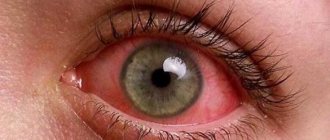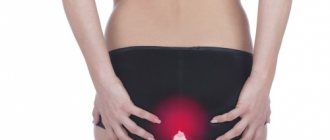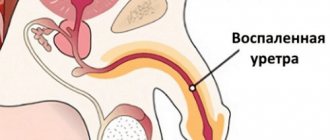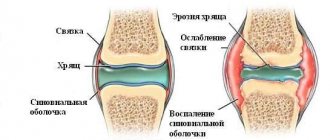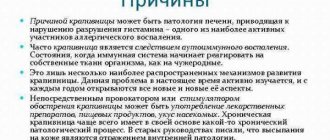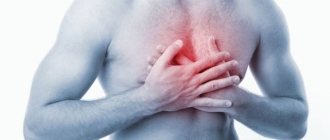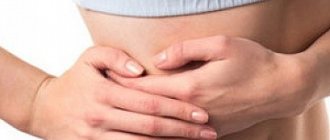Pain is an important signal from the body that indicates disturbances in it. There are several organs in the chest area that can be sources of pain. If a person experiences pain in the chest, this may indicate a disease such as osteochondrosis, diseases of the lungs, esophagus and heart. Diseases of the mammary glands in women can also be a source of pain.
Often, any pain significantly reduces the quality of life, but not every pain can be fatal. A certain type of pain can indicate serious disorders in the body. If you do not pay attention to this in time and do not take action, you can not only harm your health, but also find yourself on the brink of death. One such type of pain is heart pain.
Mastalgia, as the main cause of pain in the mammary gland
Mastalgia refers to any pain or discomfort in the mammary glands. Another name for this syndrome is mastodynia. There are cyclic and non-cyclic mastalgia. Cyclic mastodynia is associated with a woman’s menstrual cycle and manifests itself in puberty (puberty) and reproductive (the period when a woman can reproduce) age.
Note! If pain in the mammary gland on the right or left is first detected in a woman during menopause, a medical examination is required to rule out the formation of a tumor.
Cyclic mastalgia is characterized by a feeling of heaviness and fullness of the chest. The nipples become very sensitive, and painful sensations may occur in the armpit. Bilateral pain appears 5–6 days before the start of menstruation and disappears the next day after the start of discharge.
Associated symptoms of matslagia, in addition to pain in the mammary gland on the right or left in women
The appearance of non-cyclic mastodynia is not affected by the menstrual cycle and hormonal levels. The pain in this case is most often asymmetrical. The woman experiences a burning sensation, tingling, and local distension.
How do patients describe chest discomfort?
Unpleasant sensations in the chest are perceived differently by patients. The same disease is expressed in different types of discomfort in different people. Symptoms of chest diseases include the following types of sensations:
- squeezing;
- feeling of chest compression;
- burning;
- It's a dull pain;
- stabbing sensation;
- throbbing pain;
- shooting attacks.
Discomfort in the chest is determined on the left side or on the right, under the thoracic ribs, behind. The unpleasant sensation slowly intensifies or is immediately felt as acute pain. It radiates to the left arm or to the upper abdomen. Discomfort increases with physical work, sports, severe coughing, deep chest breathing, and appears when deviating from the prescribed diet.
Each type of chest discomfort corresponds to a specific disease. But only a doctor can make a diagnosis after examining the patient - X-rays, CT, MRI, ultrasound, blood tests, and so on.
Diseases that cause chest pain on the right
The causes of mastalgia can be diseases of different nature. Some diagnoses do not need to be treated, others require urgent intervention from specialists.
Hormonal imbalance
Changes occur in a woman's body during menstruation, pregnancy, lactation and menopause. Hormonal imbalance is a change in the ratio of the hormones progesterone and estrogen. An increase in estrogen increases the number of glandular cells.
When this hormone is in excess, groups of glands can form cysts. Progesterone causes swelling and increases blood circulation, which causes pain before menstruation. The causes of hormonal imbalance are:
- pregnancy;
- body changes during menopause;
- taking medications containing hormones and oral contraceptives.
A change in the ratio of hormones can occur due to stress or while taking antidepressants.
Cyst formation in the mammary gland
Cysts are cavities in the breast filled with fluid that occur in every woman and cause pain in the right or left breast.
Small cysts increase in size before the onset of menstruation, and the mammary glands become painful. Cysts do not require treatment. They are removed only when there is a threat of cancer.
Breast mastopathy
Pain in the mammary gland on the right in women in most cases occurs due to mastopathy. This is the name given to the growth of glandular breast tissue in women of reproductive age.
This disease is caused by hormonal imbalance, hereditary predisposition, endocrine system problems, obesity, and unfavorable environmental conditions. Some patients do not experience discomfort, while for others the pain can be very severe. With mastopathy, the breasts swell and the woman feels heaviness in them.
Another manifestation of the disease is the discharge of greenish or white liquid from the nipple. With diffuse mastopathy, the mammary gland completely becomes dense to the touch.
Nodular mastopathy is characterized by separate dense areas. The combination of these symptoms is characteristic of fibrocystic mastopathy, which affects both breasts at once and this differs from breast cancer.
Mastitis and other infectious diseases
Mastitis occurs when an infection enters the mammary gland. Lactation mastitis occurs in women during breastfeeding. If the baby does not suck out the milk completely, and pumping is not carried out, then the milk stagnates.
Symptoms of the disease are:
- discomfort and pain in the right or left breast;
- body temperature rises to 38°;
- the chest swells;
- the skin turns red.
During puberty and menopause, when the immune system is impaired, non-lactation mastitis may occur. The body becomes vulnerable to various infections that provoke this disease:
- metabolic diseases (diabetes mellitus, obesity, etc.);
- any infection in other organs of a woman (dental caries, ENT diseases);
- introduction of infections during medical procedures;
- severe compression of the chest due to injury.
If mastitis is left untreated, a purulent formation may develop that will have to be removed surgically.
Infectious diseases of the breast also include syphilis of the mammary glands. The causative agent of the disease is spirochete pallidum. Manifestations of the disease range from skin rashes to damage to internal organs, it all depends on the period of syphilis.
Oncological diseases
The most dangerous cause of breast pain is breast cancer. Breast cancer has a high mortality rate because women put off visiting a doctor until the last moment.
Signs of breast cancer in women:
- lumps are felt on the chest;
- lymph nodes hurt in the armpits;
- the nipple is retracted, there is dry skin on it;
- A white or greenish fluid comes out of the nipple.
The risk of cancer is greater if a woman already has bowel or ovarian cancer.
If a woman has poor heredity (close relatives have had cancer), the likelihood of developing cancer increases. Obesity and age over 60 contribute to the occurrence of cancer.
Small tumors usually do not hurt. Pain occurs when nerve endings are compressed by the tumor. For timely detection of the disease, you need to regularly conduct self-diagnosis.
It is important to catch the disease in the initial stages. In this case, the tumor is removed and radiation and a course of chemotherapy are given. If the tumor reaches a large size, the mammary gland will have to be removed.
Muscle and joint diseases
Pain in the mammary gland on the right in women can occur as a consequence of osteochondrosis. This is a chronic disease of the spine that affects and destroys the vertebrae, intervertebral joints and discs.
Osteochondrosis gives a completely different picture of pain than pain due to breast problems. A sharp or aching pain appears, which becomes stronger with heavy lifting, uncomfortable positions and sudden movements. Pain and discomfort may be caused by deep breathing and coughing.
The pain is most intense in the upper spine and along the ribs along the chest. The consequence of osteochondrosis can be a burning sensation in the chest and numbness in the hands.
Neuralgic disorders
If a woman has a history of intercostal neuralgia, the pain may radiate to the chest and cause discomfort.
The pain is sharp, intense, and can sometimes be dull and aching. Many people think that this is a pain in the heart, because with diseases of the cardiovascular system, chest pain is localized on both the left and the right. The pain occurs in attacks and intensifies with deep breathing and exercise.
Intercostal neuralgia
Intercostal neuralgia is a disease that can easily be confused with an attack of heart attack and angina. The main symptom of the disease is severe and acute chest pain. On the scale of pain, it ranks third after toothache and headache.
The reason is that the nerves that are located between a person’s ribs and exit the spinal column are compressed by the vertebrae. Naturally, a healthy person will not have such a problem. This applies to people who have problems with the spine.
Almost every person has felt pain in the back at least once. What diseases can lead to intercostal neuralgia? First of all, we are talking about osteochondrosis, scoliosis, protrusion and herniated disc. These diseases are the most common. In addition, neuralgia can be caused by injuries to the back and chest. Another factor that aggravates the condition of intercostal neuralgia is cold. It can lead to nerve inflammation.
Right chest hurts: which doctor should I see?
The specialists you should contact in case of chest discomfort are a therapist, gynecologist or mammologist. After the examination, if necessary, the woman is sent to an oncologist or neurologist. To find the right treatment, several studies are carried out.
| Method | In what cases is it used? |
| Mammography | Women are examined after the age of 40 to assess the condition of the mammary gland tissue and the nature of tumor growth |
| Ultrasound | Ultrasound is performed in all women who complain of pain in the area of the right or left mammary gland, in women who are breastfeeding or pregnant, in young women for the purpose of prevention |
| CT and MRI | These methods are used to clarify the diagnosis if ultrasound and mammography do not provide a clear picture of the disease |
| Aspiration biopsy | Surgical removal of a small sample of breast tissue or cells. Biomaterial is studied for tumor malignancy |
The cause of breast pain in women can be various diseases. Therefore, it is recommended to take care of your health and be sure to visit a doctor if you experience any symptoms related to the problem of chest discomfort. Only a doctor can make the correct diagnosis and prescribe treatment.
Diagnostics
The nature of sharp pain in different diseases is largely the same, so it is important to conduct a thorough examination to establish an accurate diagnosis.
Diagnostic measures include the following:
- Patient interview. The doctor asks about the nature of the pain syndrome, the duration of the attack and accompanying symptoms. Be sure to study the history of all previous diseases and existing chronic ones.
- The doctor listens and taps the heart, measures blood pressure and pulse.
- An electrocardiogram is performed. If pathologies of the cardiovascular system are detected, the patient is sent for echocardiography, angiography and coagulogram. The functionality and condition of the heart and blood vessels are assessed. It is recommended to conduct 24-hour Holter monitoring.
- Chest X-ray.
- Ultrasound examination of digestive and other organs.
- Collection of urine and blood tests for general and biochemical studies.
If necessary, methods such as computed tomography and magnetic resonance imaging may be prescribed, depending on the suspected cause of severe pain.
Diagnosis of pain on the right side of the chest
If the right breast hurts, then the patient should make an appointment for an examination with a gynecologist, who will palpate the mammary glands and refer further to specialized specialists. Among them may be an oncologist, mammologist, neurologist or therapist. If you suspect gastrointestinal diseases, you should go to a gastroenterologist.
Ultrasound, mammography, and computed tomography are used to diagnose breast diseases. Additional tests include blood tests for cancer markers, ductography, x-rays or a biopsy from a breast tumor.
To diagnose diseases associated with pain in the right chest, they undergo a cardiogram, fluorography, ultrasound examinations of the lungs, stomach and heart, blood tests for hormones, and MRI.
Breast cancer
Another cause of chest pain is cancer. However, it should be understood that this disease manifests its symptoms only at the second stage of development. How to recognize cancer?
- Due to asymmetry, deformation, retraction of certain areas of the breast.
- Due to pain, which in some cases can only occur with pressure, and swelling.
- By retraction and flattening of the nipples, discharge from them.
- By enlargement of regional lymph nodes.
- For ulcers on the skin.
- By peeling, itching, redness on the skin.
Typically, women already know they have cancer before pain occurs. However, if the cancer has not previously manifested itself, then these symptoms should prompt the woman to seek help.
go to top


